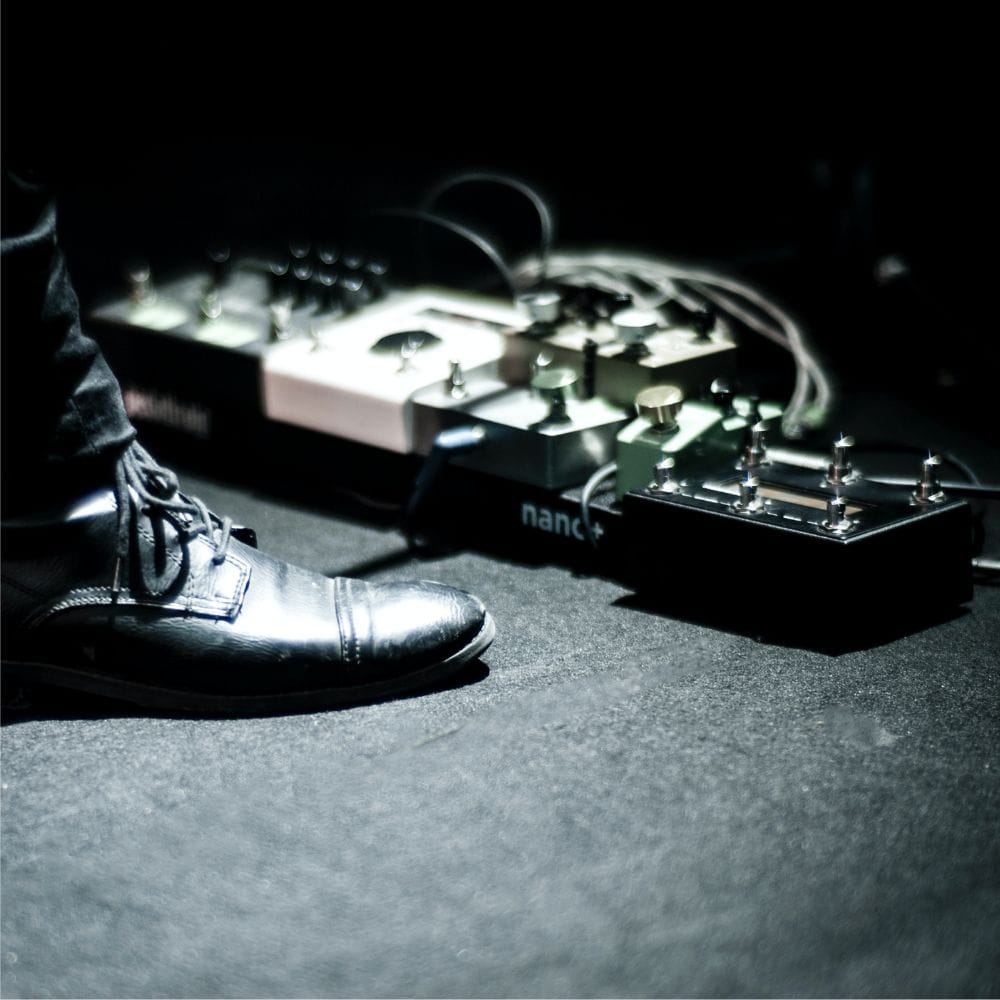Enveloping Your Sound: A Guide to Mastering Bass Envelope Filters

The envelope filter, a pedal that dynamically shapes your tone based on your playing intensity, is your secret weapon to unleash a world of funky, expressive basslines. Whether you're grooving to classic funk tunes or adding a modern edge to your sound, the envelope filter is an essential tool in any bassist's arsenal.
Unveiling the Envelope Filter: A Technical Overview
At its core, an envelope filter is a dynamic effect that reacts to the envelope of your playing, the attack, decay, and sustain of each note. As you pluck or strum the strings, the filter opens, allowing the higher frequencies to pass through, creating a bright, punchy sound. As the note decays, the filter closes, gradually emphasizing the lower frequencies, resulting in a warm, resonant tone.
Dialing In the Perfect Envelope Filter Settings: A Parameter Primer
The beauty of the envelope filter lies in its versatility, allowing you to tailor the effect to your personal style and sonic preferences. Here's a breakdown of the key parameters that control the envelope filter's behavior:
Sensitivity: This knob determines how responsive the filter is to your playing dynamics. A higher sensitivity setting means the filter opens more dramatically with harder picking, while a lower setting creates a more subtle effect.
Decay: This knob controls how quickly the filter closes after the note is played. A shorter decay time results in a quick, snappy sound, while a longer decay time produces a smoother, more sustained tone.
Q: This knob adjusts the sharpness of the filter's sweep. A higher Q setting emphasizes the resonant frequency, creating a more pronounced wah effect, while a lower Q setting produces a broader, subtler sweep.
Peak: This knob controls the overall intensity of the filter effect. A higher peak setting amplifies the filter's sweep, while a lower peak setting reduces the effect's impact.
Experimentation is Key: Unleashing Your Creative Potential
The envelope filter is a playground for experimentation, allowing you to discover a vast array of sonic possibilities. Try playing with different picking techniques, from staccato bursts to smooth legato lines, and observe how the filter responds to your playing dynamics.
Preserving the Low End: Keeping Your Bass Solid
While envelope filters can add a wealth of sonic texture, it's crucial to maintain your bass's low-end punch. To achieve this, many envelope filter pedals incorporate a Dry/Wet mix control, allowing you to blend the unfiltered signal with the filtered signal, ensuring a solid bottom end while still retaining the envelope filter's effect.
Techniques to Elevate Your Envelope Filter Mastery
To truly unlock the envelope filter's potential, incorporate these techniques into your playing:
Ghost Notes: Use ghost notes, lightly played notes, to trigger the filter without sustaining the note, adding percussive accents to your grooves.
Ghost Slides: Slide from ghost notes into full-fledged notes, creating a dramatic swell of sound as the filter opens.
Accented Picking: Emphasize certain notes by picking them harder, triggering the filter more intensely and adding rhythmic variation.
Envelope Filter in Action: Iconic Examples
The envelope filter has graced countless iconic basslines, leaving an indelible mark on music history. Here are a few notable examples:
- Bootsy Collins's funky riffs on Parliament and Funkadelic tracks
- Stevie Wonder's mesmerizing basslines on songs like "Superstition" and "Isn't She Lovely"
- Bernard Edwards's driving grooves on Chic's disco anthems
- Flea's slap-bass mastery with the Red Hot Chili Peppers
- Thundercat's futuristic, envelope-driven basslines

FAQs About Bass Envelope Filters
How Can I Get the Most Out of My Bass Envelope Filter?
Getting the most out of your bass envelope filter involves understanding how it works, experimenting with different settings, and tailoring the effect to your playing style and the music you're playing. Don't be afraid to try extreme settings or combinations with other effects.
What Settings Should I Start With on My Bass Envelope Filter?
While the ideal settings will vary depending on the specific model and your personal preferences, a good starting point is to set all controls to their midpoint. From there, you can adjust each control one at a time to hear how they affect the sound.
How Can I Use a Bass Envelope Filter to Enhance My Bass Tone?
A bass envelope filter can enhance your bass tone by adding movement and character to your sound. It's particularly effective for creating funky, percussive sounds or adding an ethereal quality to sustained notes.
Can I Use a Bass Envelope Filter in a Live Setting?
Absolutely! Bass envelope filters can be very effective in a live setting. They can help your bass stand out in the mix and provide exciting moments in your performance. Just make sure to check how it sounds through the PA system, as the effect can sometimes be less noticeable in a full band mix.
How Can I Prevent My Bass Envelope Filter from Making My Sound Too Thin?
To prevent your bass envelope filter from making your sound too thin, try reducing the filter's range or intensity, increasing the low-frequency content of your input signal (e.g., by boosting the bass on your preamp or using a bass-heavy pickup), or combining the effect with a clean signal.
How Should I Position My Bass Envelope Filter in My Effects Chain?
The position of your bass envelope filter in your effects chain can significantly impact its sound. As a general rule, it's best to place it after any compression or EQ, but before modulation and time-based effects like chorus and delay.
How Can I Use a Bass Envelope Filter for Solos?
Using a bass envelope filter for solos can help your bass stand out and add interest to your lines. Try using a high intensity setting for a dramatic effect, or combine it with a boost pedal to ensure you cut through the mix.
What Should I Do If My Bass Envelope Filter is Too Harsh or Overbearing?
If your bass envelope filter is too harsh or overbearing, try reducing the filter's range or intensity, or adjust the tone control on your bass or amplifier. You can also try blending in some clean signal if your pedal has a blend or mix control.
How Can I Use a Bass Envelope Filter to Create Unique Sounds?
A bass envelope filter is a powerful tool for creating unique sounds. Experiment with different settings, play with the filter's response by varying your playing dynamics, and combine it with other effects to discover new sonic possibilities.
Can I Use a Bass Envelope Filter with Other Instruments Besides Bass?
Yes, while bass envelope filters are designed for bass, they can also be used with other instruments like guitar or keyboards. However, keep in mind that the frequency range and response might not be ideal for these instruments, so it's worth trying before you buy.
Conclusion: Embracing the Envelope Filter
The envelope filter is an indispensable tool for bassists seeking to expand their sonic palette and add a unique dimension to their playing. With its versatility and dynamic responsiveness, the envelope filter invites experimentation and creativity, allowing you to craft a sound that's uniquely your own.
So, grab your bass, plug into the best bass envelope filter you can find, and prepare to envelop your sound with endless sonic possibilities.
*FYI, when you make a qualifying purchase through one of our links, we might receive a small commission from Amazon or other retailers, at no additional cost to you, which helps us to fund this site. It's a way to find what you're looking for while supporting us in the process!
